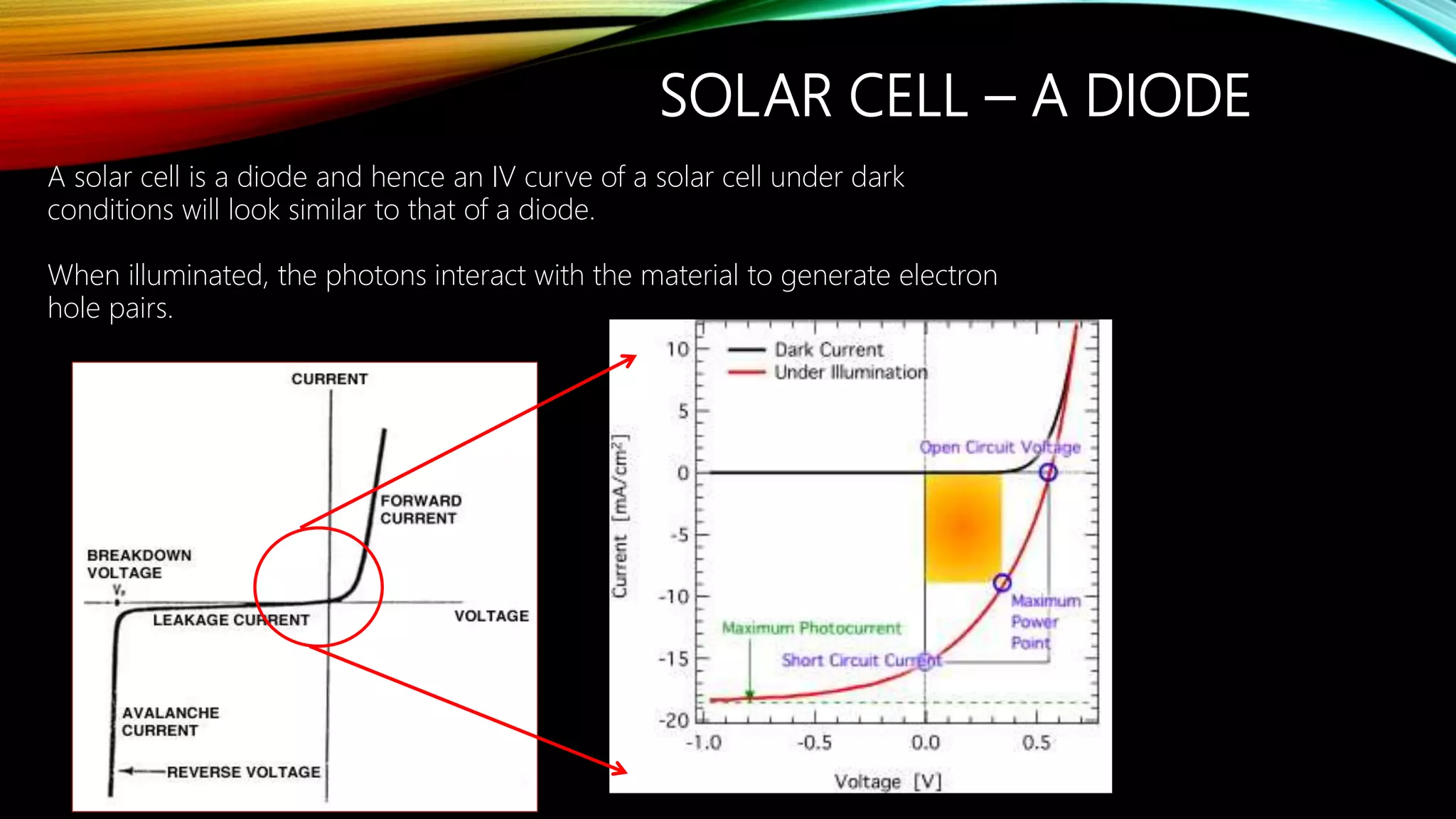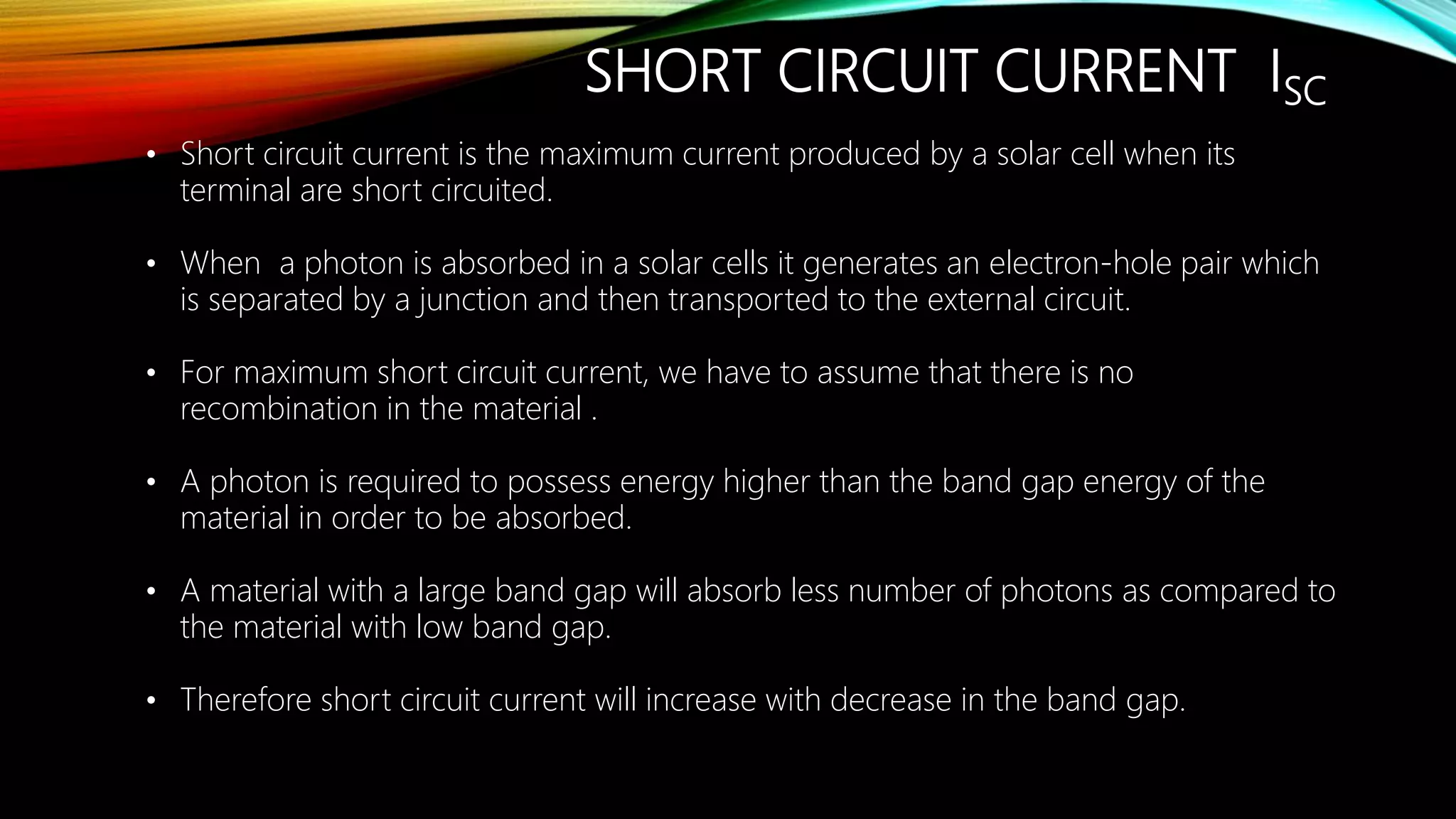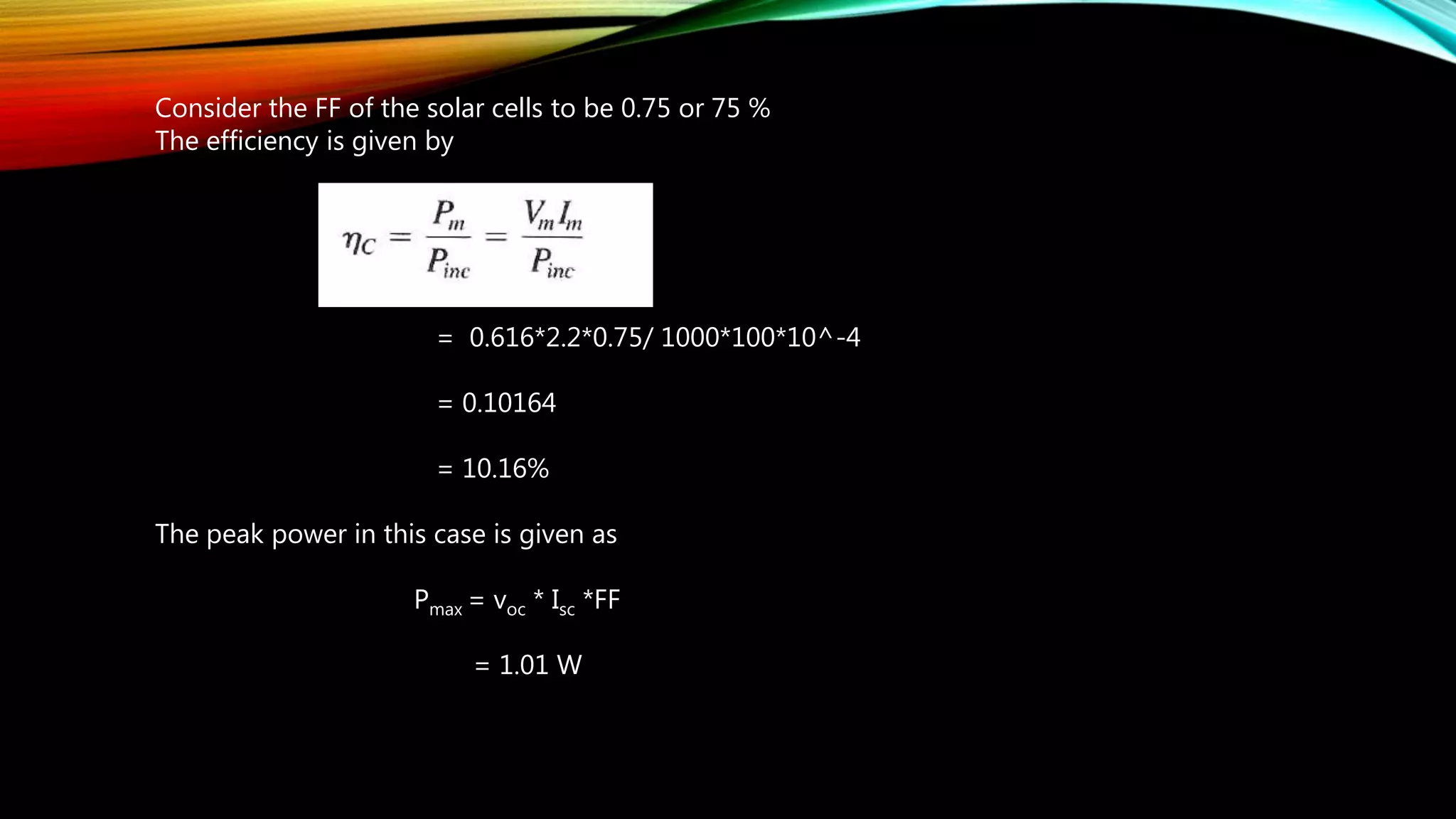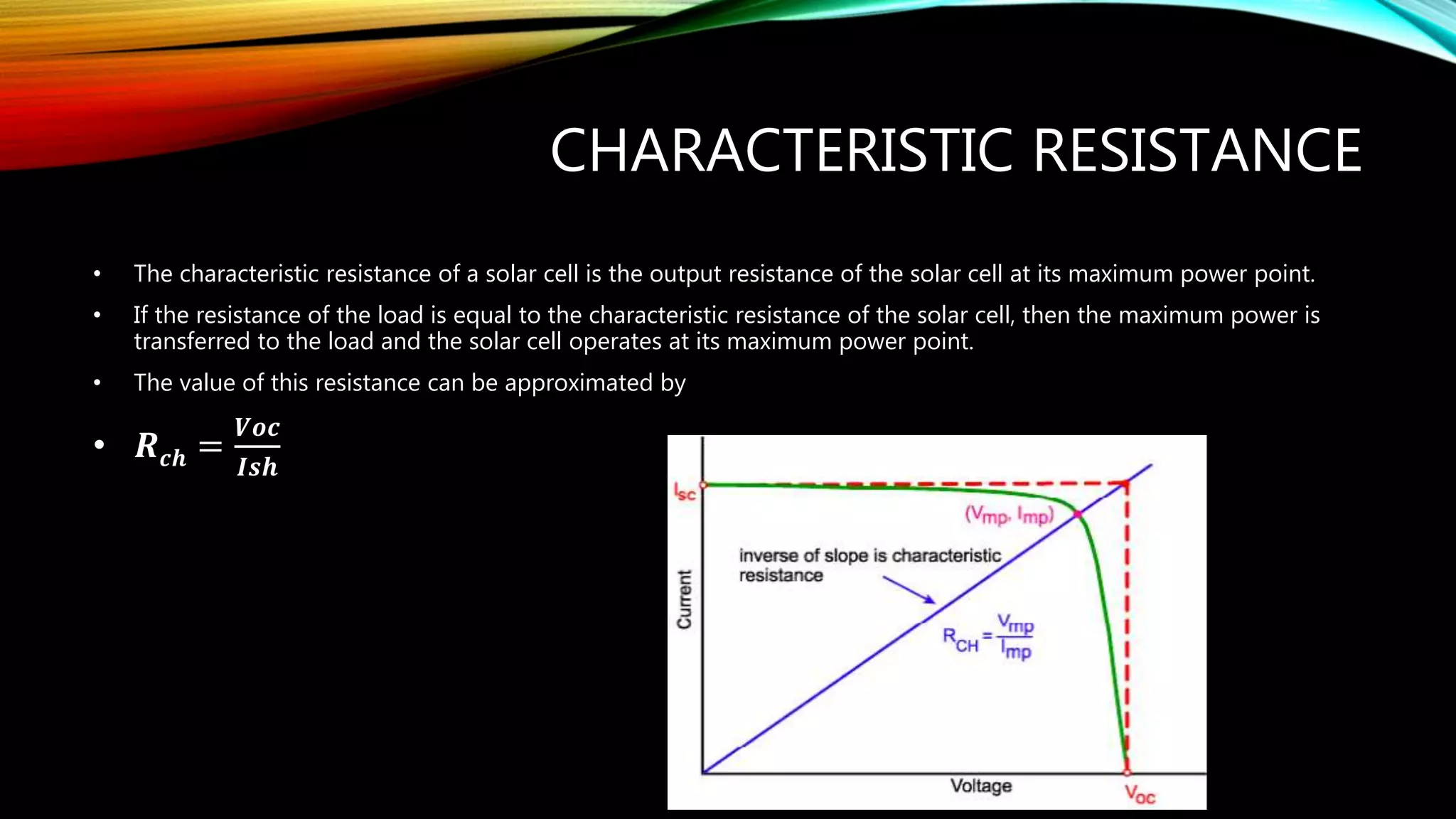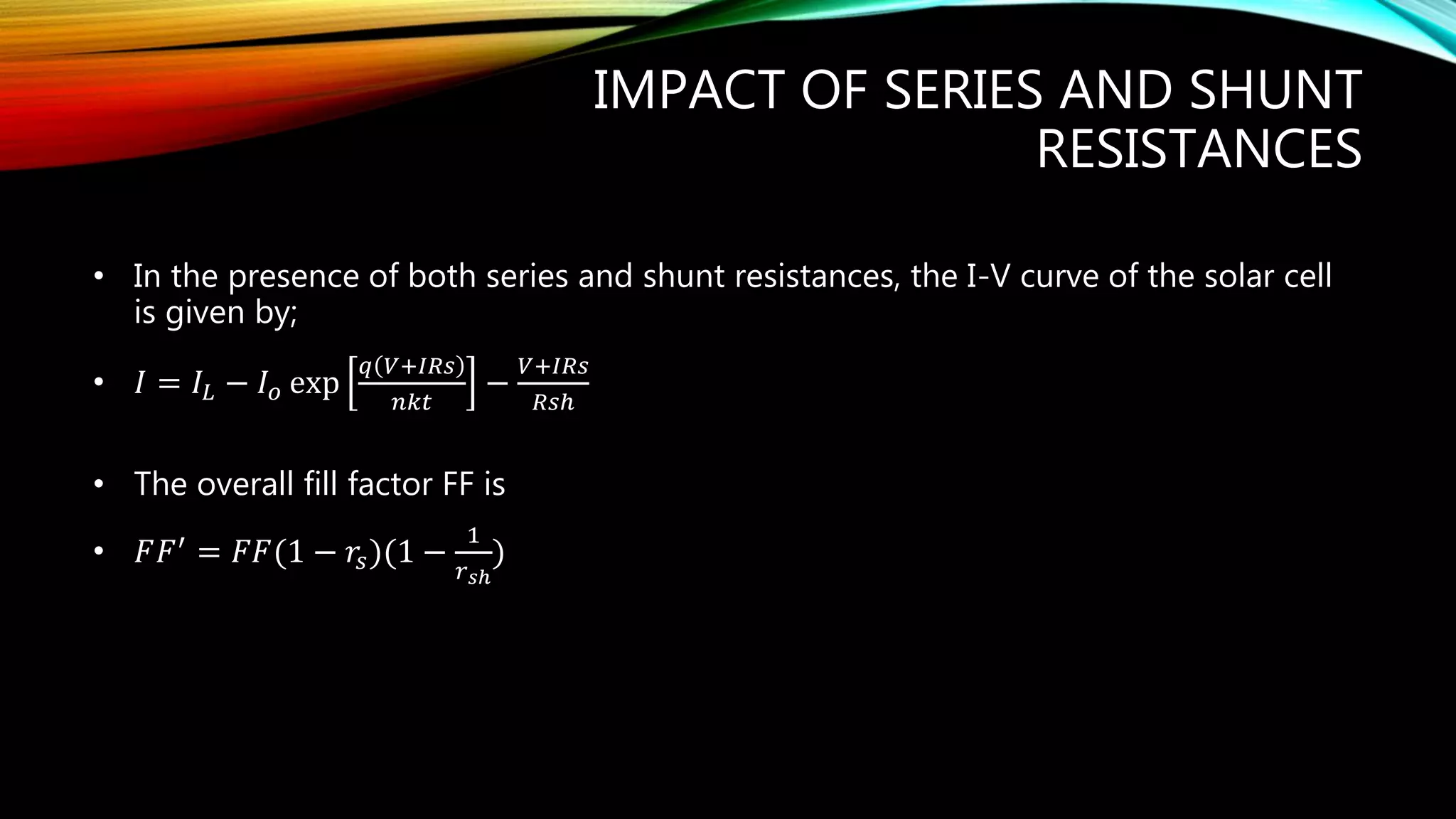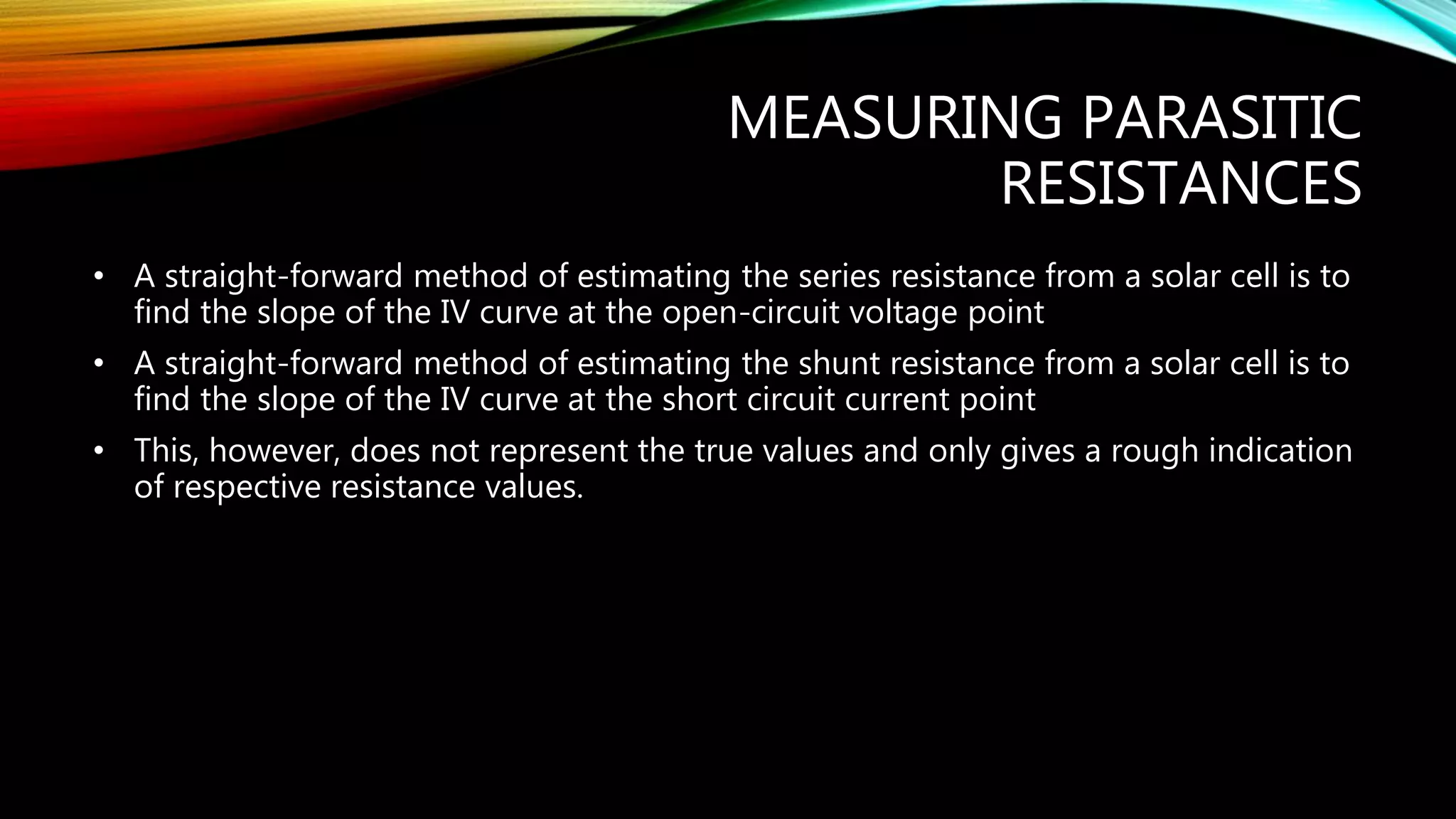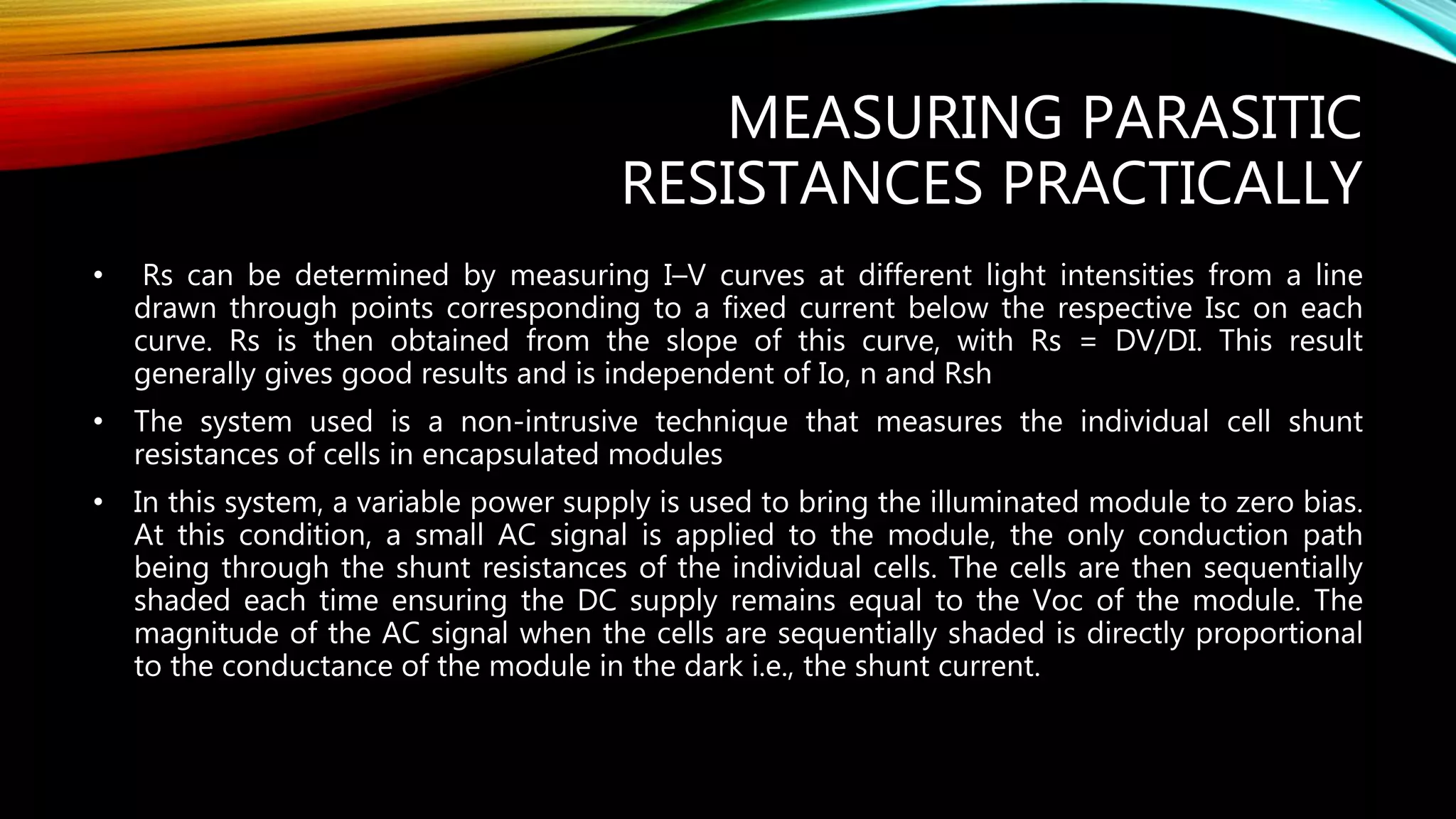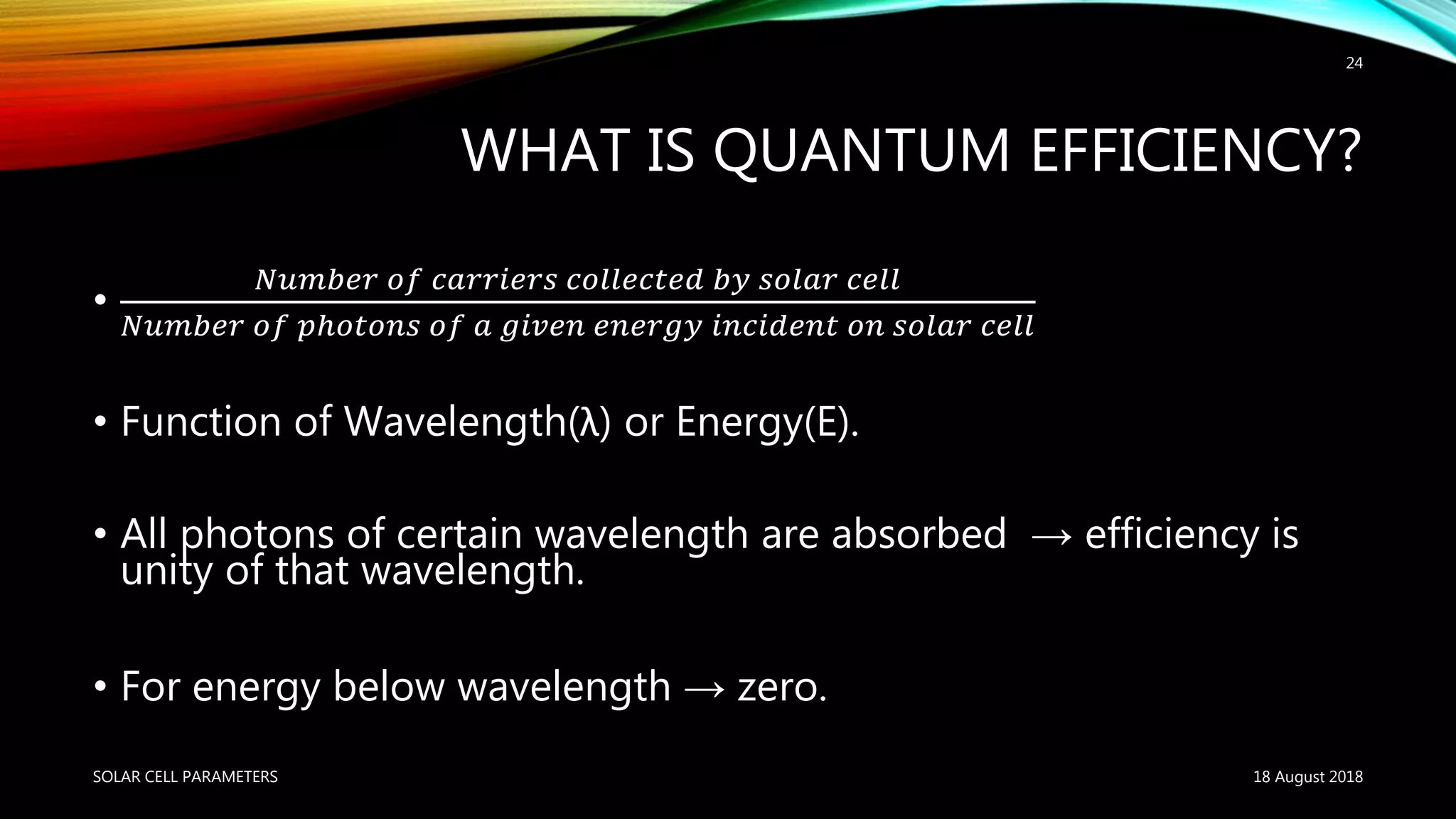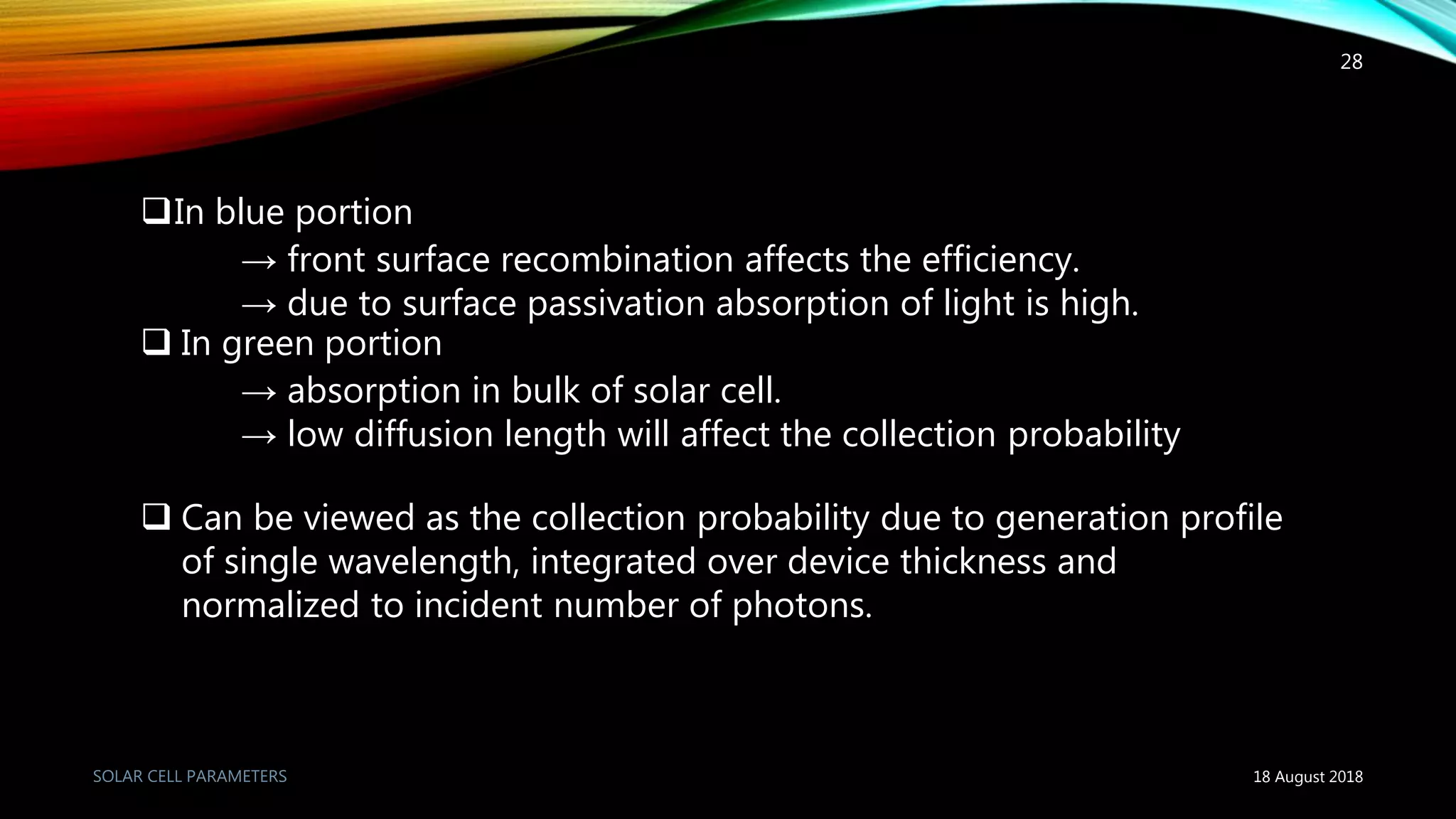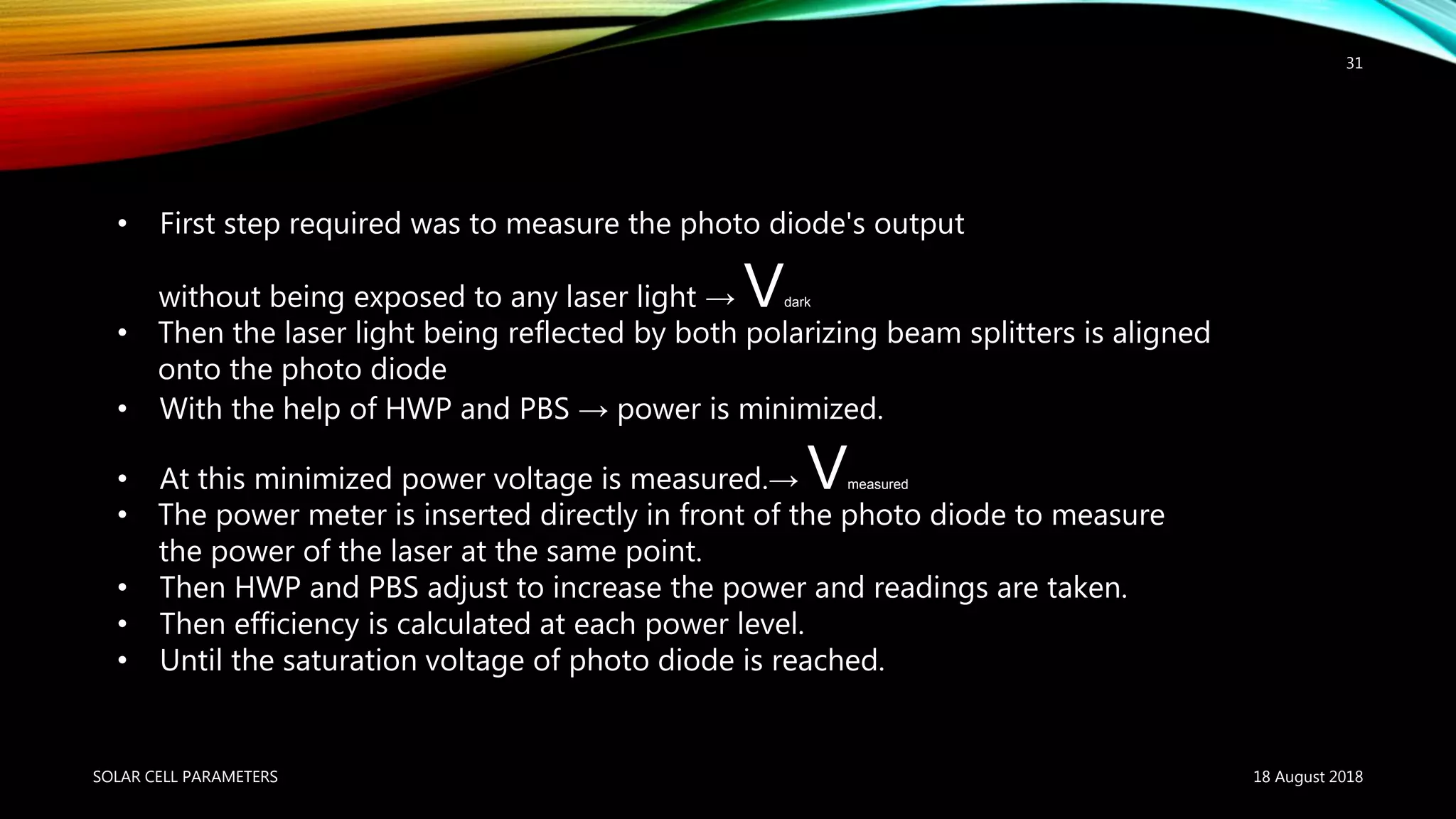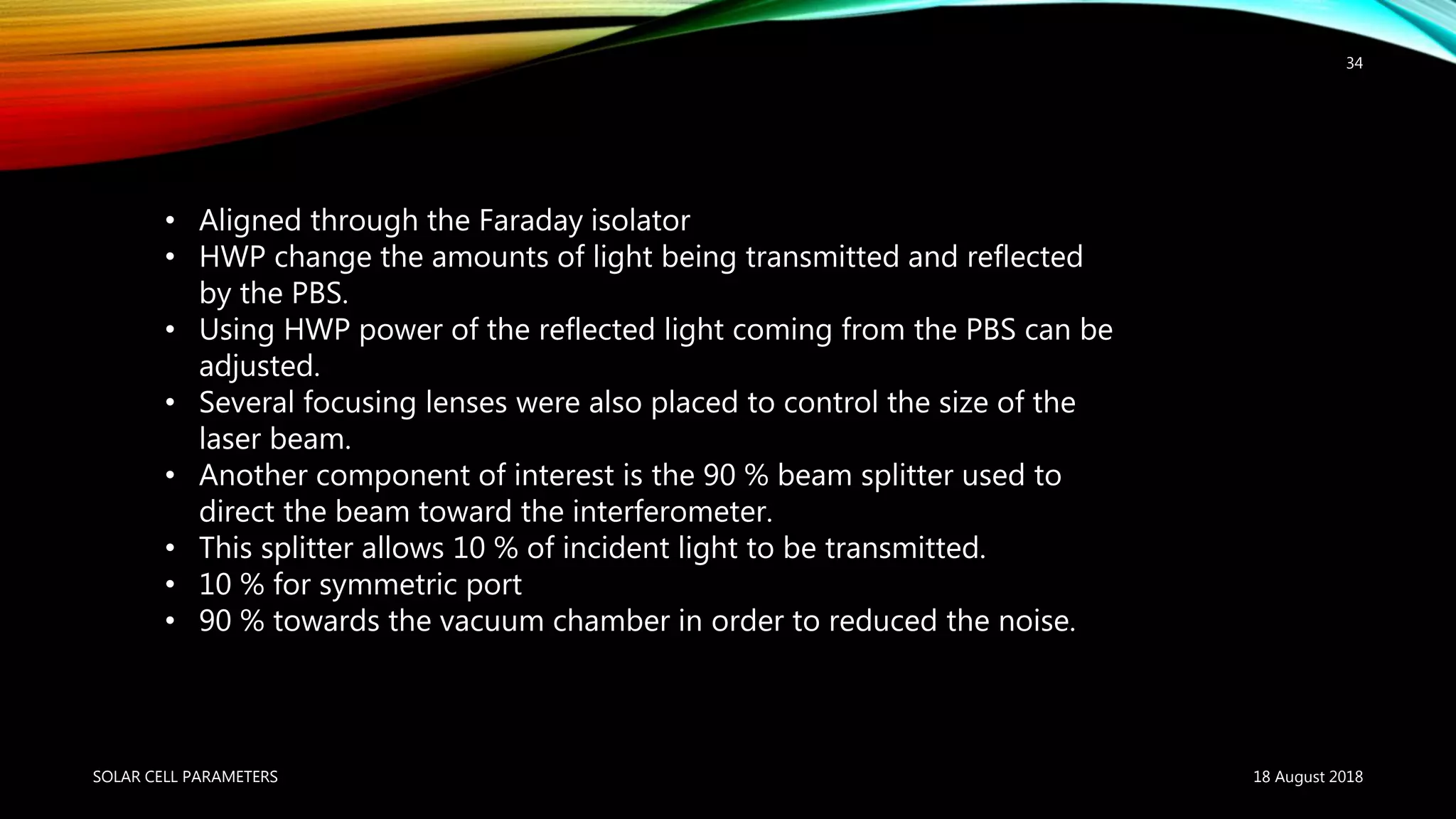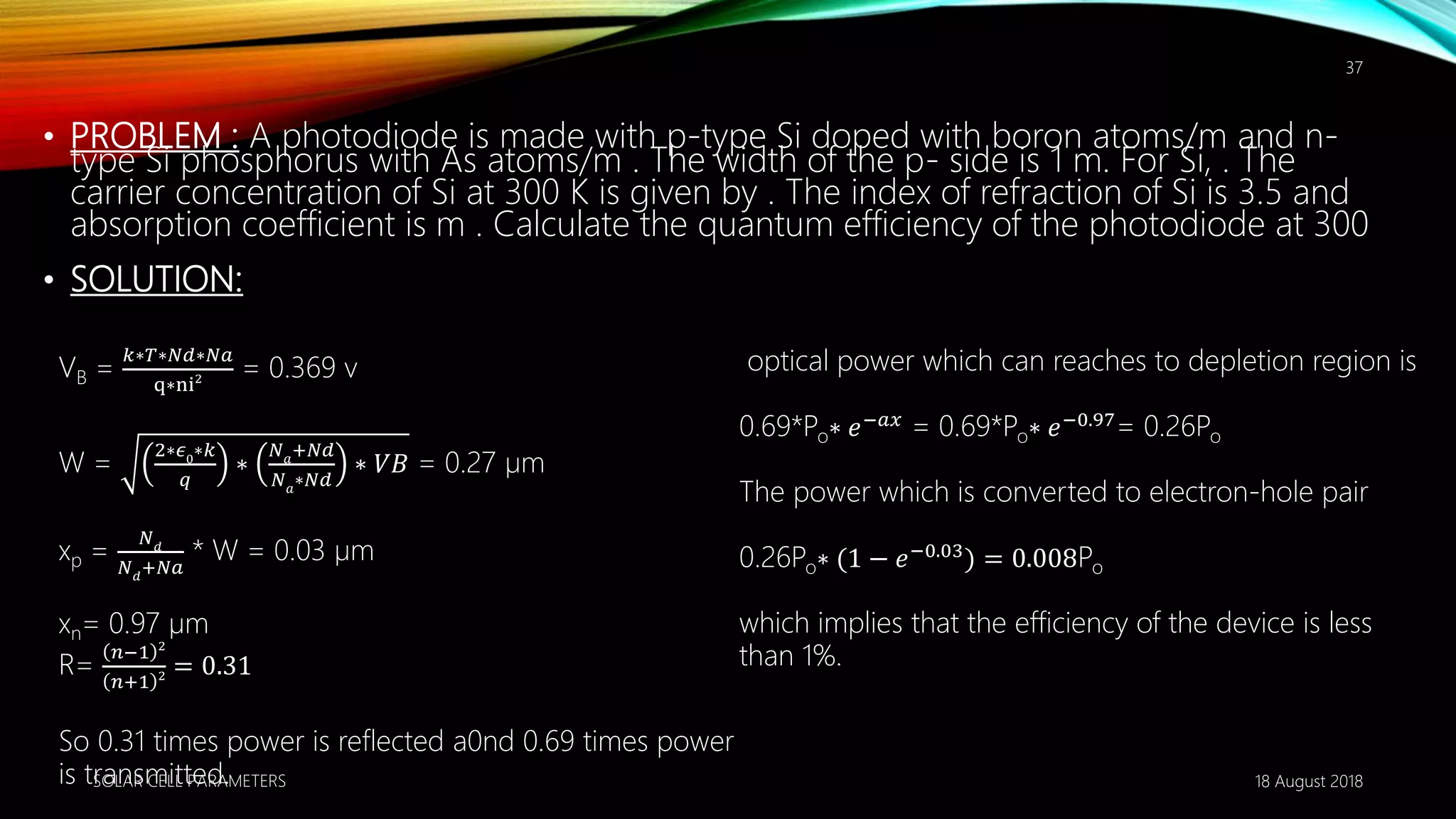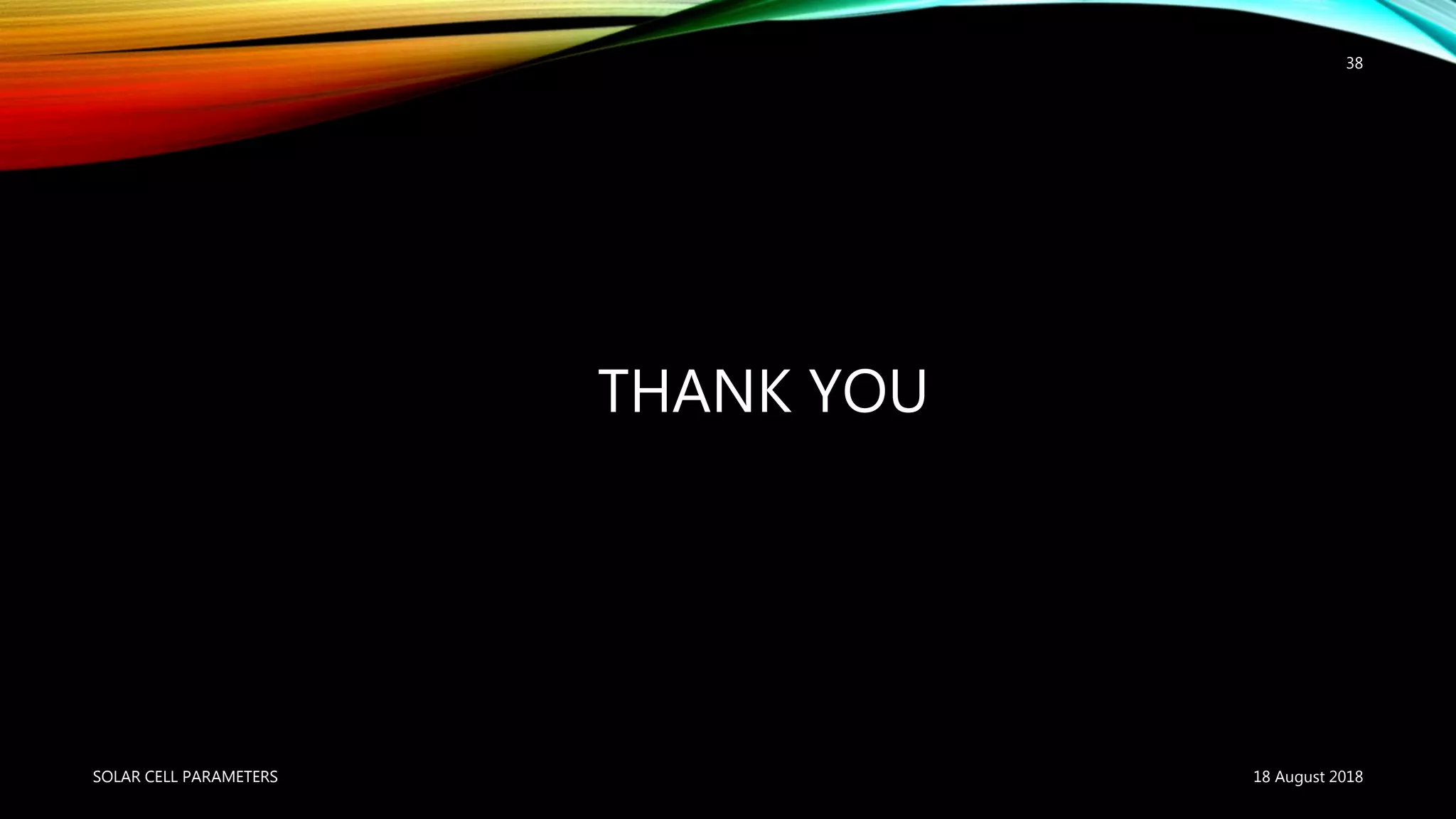This document discusses key parameters of solar cells such as open circuit voltage (Voc), short circuit current (Isc), fill factor (FF), and efficiency. It describes how these parameters are affected by factors like series resistance (Rs), shunt resistance (Rsh), and quantum efficiency. Voc is the maximum voltage produced at zero current, while Isc is the maximum current at zero voltage. FF accounts for non-idealities and is used to calculate the maximum power point. Rs and Rsh are parasitic resistances that lower FF. Quantum efficiency measures the number of carriers collected per photon over absorption and reflects losses from reflection and recombination.



